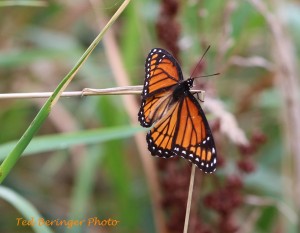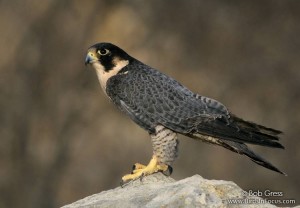Plant Materials Center to Host 40th Annual North American Butterfly Association Count
The 40th Annual North American Butterfly Association (NABA) Count will kick off at the Natural Resources Conservation Service (NRCS) Manhattan Plant Materials Center (PMC), Thursday, July 10, 2014, beginning at 9 a.m. There is no charge to participate in the count, but volunteers need to register by Monday, July 8, by calling 785-539-8761, to assure adequate supply of materials and handouts. Those attending should bring a sack lunch, water, bug spray, binoculars, field guides, and camera (if you have them) and dress appropriately for the weather conditions. Attendees at the event will be on their own for transportation. If special accommodations are needed, please let the PMC know.
The annual count is intended to promote interest in butterflies and provide results useful for scientific monitoring of this beautiful and fascinating group of insects.
“People are drawn to butterflies because of the beauty they bring to our natural world, but they are equally important to the environment as pollinators, consumers, and food sources for other animals,” said Rich Wynia, PMC Manager.
“The PMC is excited to host the NABA count again this year and it provides a way for volunteers to help scientists monitor butterfly migration and get a good estimate of the different species and their numbers.”
Volunteers should meet at the PMC and from there will get instructions on how to participate in the count. The count area covers a 15-mile diameter circle with the PMC, Konza Prairie, and Manhattan located in the circle. Due to the size of the survey area, PMC Staff will organize volunteers to cover as much area as possible. More information about the butterfly count is available at www.naba.org.
Those attending the event will also learn more about the PMC and its purpose of developing plants for conservation and have the opportunity to see some of the pollinator projects at the PMC.
For more information about the PMC, go to http://plant-materials.nrcs.usda.gov/kspmc or http://ks.nrcs.usda.gov
Directions
From Manhattan: From Fort Riley Blvd. or Tuttle Creek Blvd. (east side of Manhattan by Manhattan Town Center Mall) cross the Kansas River Bridge. Immediately after crossing the bridge, turn right on Riley Co. 901-McDowell Creek Road, travel 6.0 miles, turn right on Riley Co. 424. Follow Riley Co. 424, 3 miles north and 1 mile west to the PMC.
From I-70: Travelers on I-70 should exit 307-McDowell Creek Road Interchange. Eastbound travelers should turn left, westbound travelers should turn right on Riley Co. 901-McDowell Creek Road, travel 3.6 miles to west 40th Avenue, turn left and travel 3 miles north to PMC.


